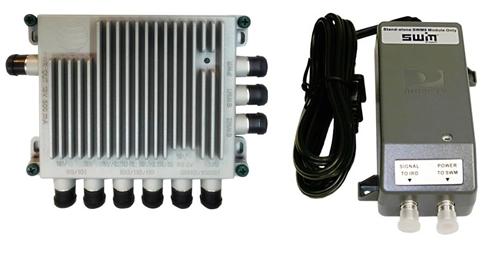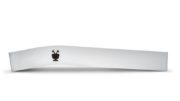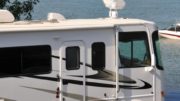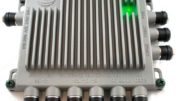Updated for 2023!
Ah, the eternal struggle. Is it better to have an easy installation or to have some ability to upgrade in the future? It’s hard to know, but once you make the decision, it’s hard to change.
DIRECTV’s been using the SWM system for about four years to make installations easier and more reliable. For most people who use a single DVR and two or three receivers or clients, it’s a no-brainer. They want the simplest possible system, devoid of extra wires and boxes. On the other hand, Solid Signal’s fans are usually a little more advanced than that. Our loyal followers sometimes come up with systems that even the top engineers can’t match. So let’s look at the advantages of both.
SWM-enabled dish
If your HD dish has only one wire coming from it, it’s a SWM-enabled dish. That means it’s got all the hardware it needs for a modern DIRECTV system in the front part (the LNB) of the dish. DIRECTV created this system because it’s easy to implement, saves time in installation and saves a lot of copper wire.
In the past, a SWM-enabled dish could only support 8 tuners. That was enough for average folks but after your fourth DVR, you were done. With a Genie you only had enough room for three extra receivers. Today’s SWM-enabled dishes are designed to support 13 tuners. (Confused? Learn all about tuner math.) 13 tuners is enough to support a regular Genie DVR plus 6 other DVRs, for a ten-room system. That doesn’t seem like much of a compromise. For those folks who want more, there are options.
External SWM
Before the SWM-enabled dish, all DIRECTV HD installations used four wires coming down from the dish. If you had more than four tuners in use, a multiswitch was used to add as many as necessary. When DIRECTV moved to SWM technology, they started by replacing the older style multiswitches, and the external SWM was the answer. That was back in 2009. Today, it’s very rare to see those old multiswitches except in older marine installs.
With an external SWM, you get all the benefits of SWM technology but you have the ability to expand your DIRECTV system as much as you need. The current external multiswitch, the SWM-30, can feed 30 tuners in a commercial install with H44 receivers. For residential customers, it supports 26 tuners. Beyond that you can use more than one multiswitch for limitless expansion. (Curious how to do it? Read our white paper.)
It’s worth noting that all dishes and SWM multiswitches must use the grey PI29 power inserter instead of the old black PI21 power inserter. If your power inserter is black, replace it, 100% of the time. No one should be using the PI21 for any reason today.
Which to choose?
The decision of whether to go with the SWM-enabled dish or the external SWM really depends on whether or not you think you will expand beyond eight tuners. It’s not impossible to change from one to the other, but it does take some extra wiring and time. We recommend most DIY’ers get the external SWM because we feel like you’ll be upgrading soon, but if you want to keep it simple, start with the SWM-enabled dish. There’s no difference between the two in the way your receivers are set up, so all you would need to do in order to upgrade is to change the LNB, run some extra wires and install an external multiswitch.
No matter what you want to do with your DIRECTV system, you’ll get the best parts at the best prices at SolidSignal.com. Shop now! If you have a question, call us at 888-233-7563 or fill out the form below.





